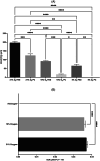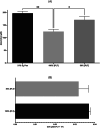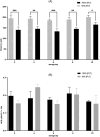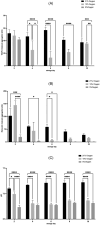Enhanced oxygen availability and preserved aggregative function in platelet concentrates stored at reduced platelet concentration
- PMID: 39673310
- PMCID: PMC11925141
- DOI: 10.1111/trf.18101
Enhanced oxygen availability and preserved aggregative function in platelet concentrates stored at reduced platelet concentration
Abstract
Background: Storage of platelets as platelet concentrates for transfusion is limited to 7 days in the United Kingdom due to deleterious effects on platelet quality and function that occur over time. Oxygen (O2) availability and sufficient gaseous exchange are known to be essential in maintaining the viability and function of platelets stored for transfusion. Despite this, there is a paucity of studies undertaking direct measures of O2 and optimization of conditions throughout storage. We address this and modulate the storage conditions to improve platelet quality and function.
Study design and methods: Electron paramagnetic resonance oximetry was implemented to directly measure the [O2] experienced by stored platelet concentrates and the O2 consumption rate under standard blood banking conditions. From these direct measures the mathematical modeling was then applied to predict the main parameters contributing to effective O2 distribution throughout the unit.
Results: This study demonstrates reducing the storage [O2] to reflect near physiological levels significantly alters O2 distribution within the unit and negatively impacts platelet functionality and quality, and therefore is not a viable storage option.
Discussion: We show the reduction of platelet concentration within a unit improves O2 availability and pH, promotes a more uniform distribution of O2 throughout prolonged storage, and maintains platelet agonist-induced aggregation comparable to 100% platelet concentration. This may be a viable option and could potentially lead to reduced donor demand.
Keywords: blood component preparations; platelet transfusion; transfusion practices (adult).
© 2024 The Author(s). Transfusion published by Wiley Periodicals LLC on behalf of AABB.
Conflict of interest statement
The authors have disclosed no conflicts of interest.
Figures







Similar articles
-
Impedance aggregometric analysis of platelet function of apheresis platelet concentrates as a function of storage time.Scand J Clin Lab Invest. 2016 Dec;76(8):664-670. doi: 10.1080/00365513.2016.1238505. Epub 2016 Oct 5. Scand J Clin Lab Invest. 2016. PMID: 27701904
-
Small volume platelet concentrates for neonatal use are more susceptible to shear-induced storage lesion.Platelets. 2024 Dec;35(1):2389967. doi: 10.1080/09537104.2024.2389967. Epub 2024 Aug 22. Platelets. 2024. PMID: 39169763
-
Permanent lesions of stored platelets correlate to pH and cell count while reversible lesions do not.Proc Soc Exp Biol Med. 1998 Feb;217(2):219-27. doi: 10.3181/00379727-217-44226. Proc Soc Exp Biol Med. 1998. PMID: 9452147
-
Platelets: handle with care.Transfus Med. 2016 Oct;26(5):330-338. doi: 10.1111/tme.12327. Epub 2016 Jun 27. Transfus Med. 2016. PMID: 27346788 Review.
-
In vitro measurements of platelet concentrates stored at 4 and 22 degree C: correlation with posttransfusion platelet viability and function.Vox Sang. 1981;40 Suppl 1:72-86. doi: 10.1111/j.1423-0410.1981.tb00741.x. Vox Sang. 1981. PMID: 7027627 Review. No abstract available.
References
-
- Murphy S, Gardner FH. Platelet storage at 22°C: role of gas transport across plastic containers in maintenance of viability. Blood. 1975;46(2):209–218. - PubMed
-
- Kilkson H, Holme S, Murphy S. Platelet metabolism during storage of platelet concentrates at 22°C. Blood. 1984;64(2):406–414. - PubMed
-
- Wallvik J, Akerblom O. Platelet concentrates stored at 22°C need oxygen. The significance of plastics in platelet preservation. Vox Sang. 1983;45(4):303–311. - PubMed
-
- Murphy S, Kahn RA, Holme S, Phillips GL, Sherwood W, Davisson W, et al. Improved storage of platelets for transfusion in a new container. Blood. 1982;60(1):194–200. - PubMed
MeSH terms
Substances
LinkOut - more resources
Full Text Sources

